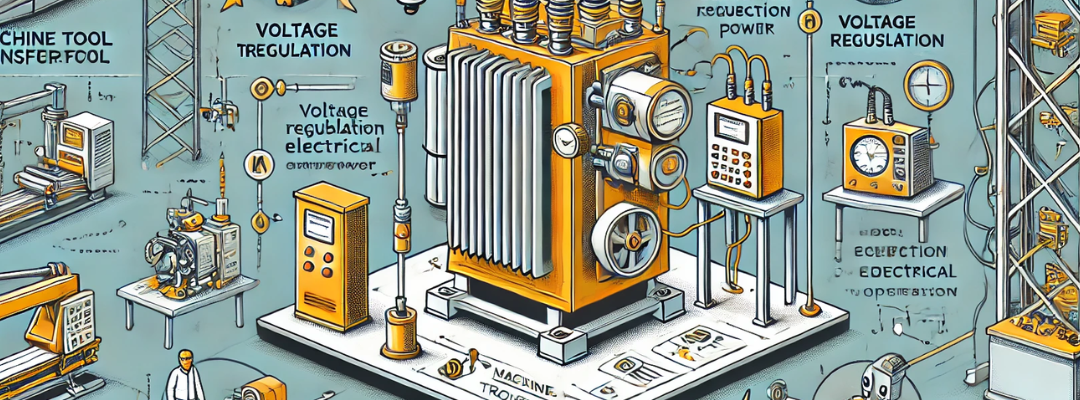A machine tool transformer is a type of transformer used in industrial environments to provide the correct voltage and power supply to machine tools, such as CNC machines, milling machines, lathes, and other industrial equipment. It steps down or steps up the voltage from the power supply to the level required by the machine, ensuring safe and reliable operation.
Function of a Machine Tool Transformer
- Voltage Conversion: The primary function of a machine tool transformer is to convert the incoming power supply to a different voltage level that matches the operational requirements of the machine tool. For example, it can step down the high voltage from the main power source (e.g., 480V or 240V) to a lower voltage required by the machine (e.g., 110V or 24V).
- Electrical Isolation: Machine tool transformers provide electrical isolation between the power source and the machine tool. This isolation helps protect the machine and operators from electrical faults, surges, or potential differences in the power system that could cause damage or pose safety hazards.
- Power Supply Regulation: Transformers help regulate the power supply to machine tools, ensuring stable voltage and reducing fluctuations or noise in the power line. This is especially important for sensitive equipment like CNC machines, which require consistent power for accurate operations.
- Power Distribution to Control Circuits: Machine tool transformers often supply low-voltage power to the control circuits of machines. These control circuits (such as PLCs, sensors, and safety systems) require precise and stable low-voltage power for proper functioning.
- Adaptation to Local Power Standards: Machine tool transformers allow machines designed for one country’s electrical standards (e.g., different voltages or frequencies) to operate in another country with different power supply specifications by adapting the voltage and frequency accordingly.
Importance of a Machine Tool Transformer
- Protection of Equipment: By converting and regulating the power supply, a machine tool transformer helps protect expensive and sensitive equipment from electrical damage caused by voltage fluctuations, surges, or incorrect voltage levels. This protection extends the life of the machinery and reduces the risk of costly repairs or downtime.
- Ensures Safe Operation: Electrical isolation provided by the transformer prevents the machine tool from being exposed to potential electrical hazards, such as ground faults or short circuits, which could harm both the equipment and the operator. This makes the transformer an essential safety component.
- Improves Machine Performance: Stable and consistent power is critical for the precise operation of machine tools, especially in applications like CNC machining, where even minor power fluctuations can affect the quality and accuracy of the workpiece. A transformer ensures the machine operates efficiently by providing a steady and correct voltage supply.
- Compatibility with Different Power Supplies: Machine tool transformers allow equipment designed for one type of voltage or power standard to be used in areas with different power supplies. This is particularly useful for manufacturers and industrial plants that may import machines from different regions or need to operate equipment in various international markets.
- Reduces Electrical Noise: Transformers can filter out electrical noise or interference from the power line, which could disrupt the operation of sensitive control systems and other electronic components. This results in more reliable and accurate machine tool performance.
- Energy Efficiency: By supplying the correct voltage, machine tool transformers ensure that machinery operates at optimal efficiency. Running machines on incorrect voltage can lead to inefficient power use, excessive heat generation, and reduced operational performance.
- Ensures Compliance with Electrical Codes: In many industrial settings, transformers help ensure compliance with local electrical codes and standards. These codes often require specific voltage levels or isolation measures to prevent electrical hazards, especially when operating high-powered machines.


Recent Comments